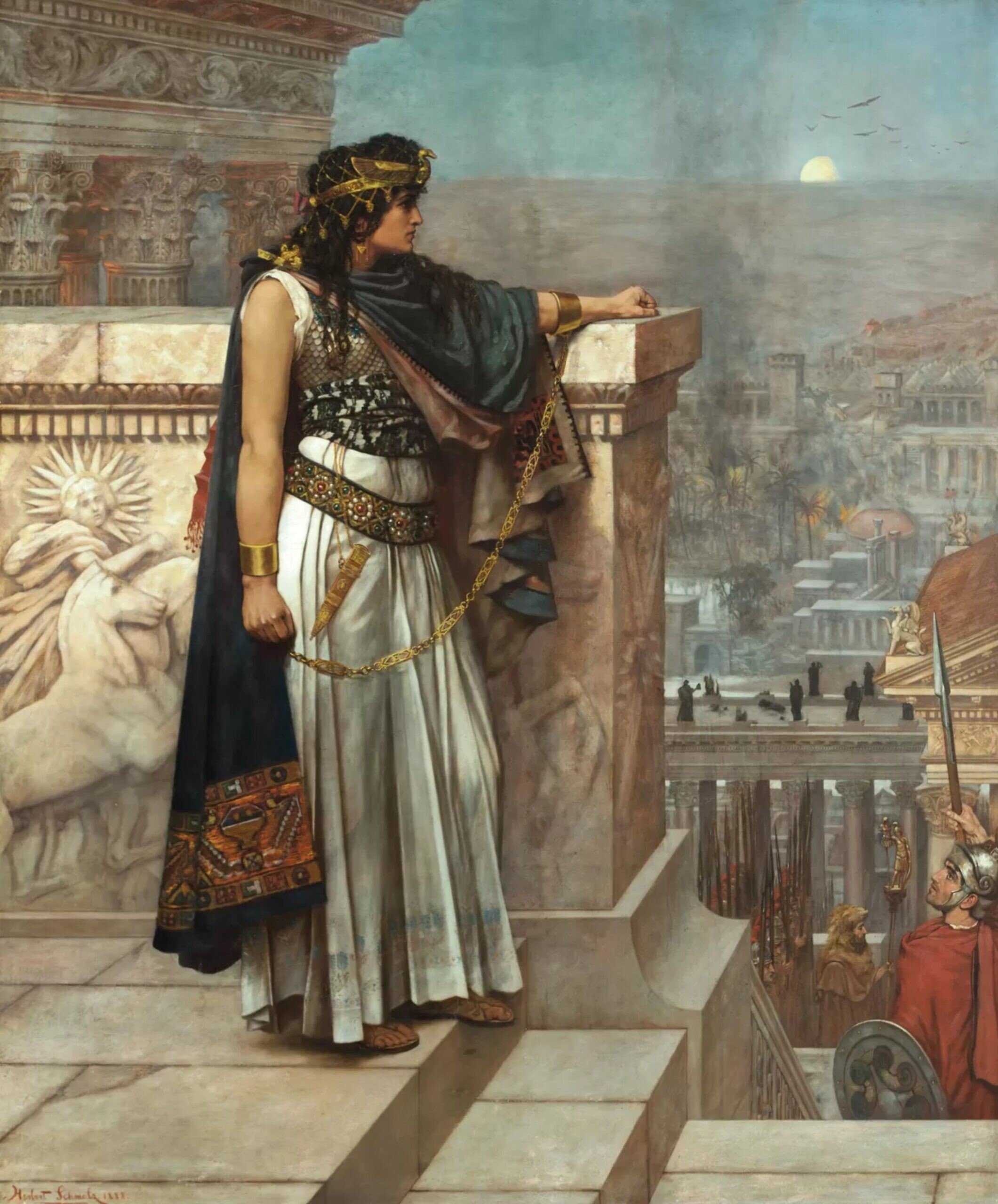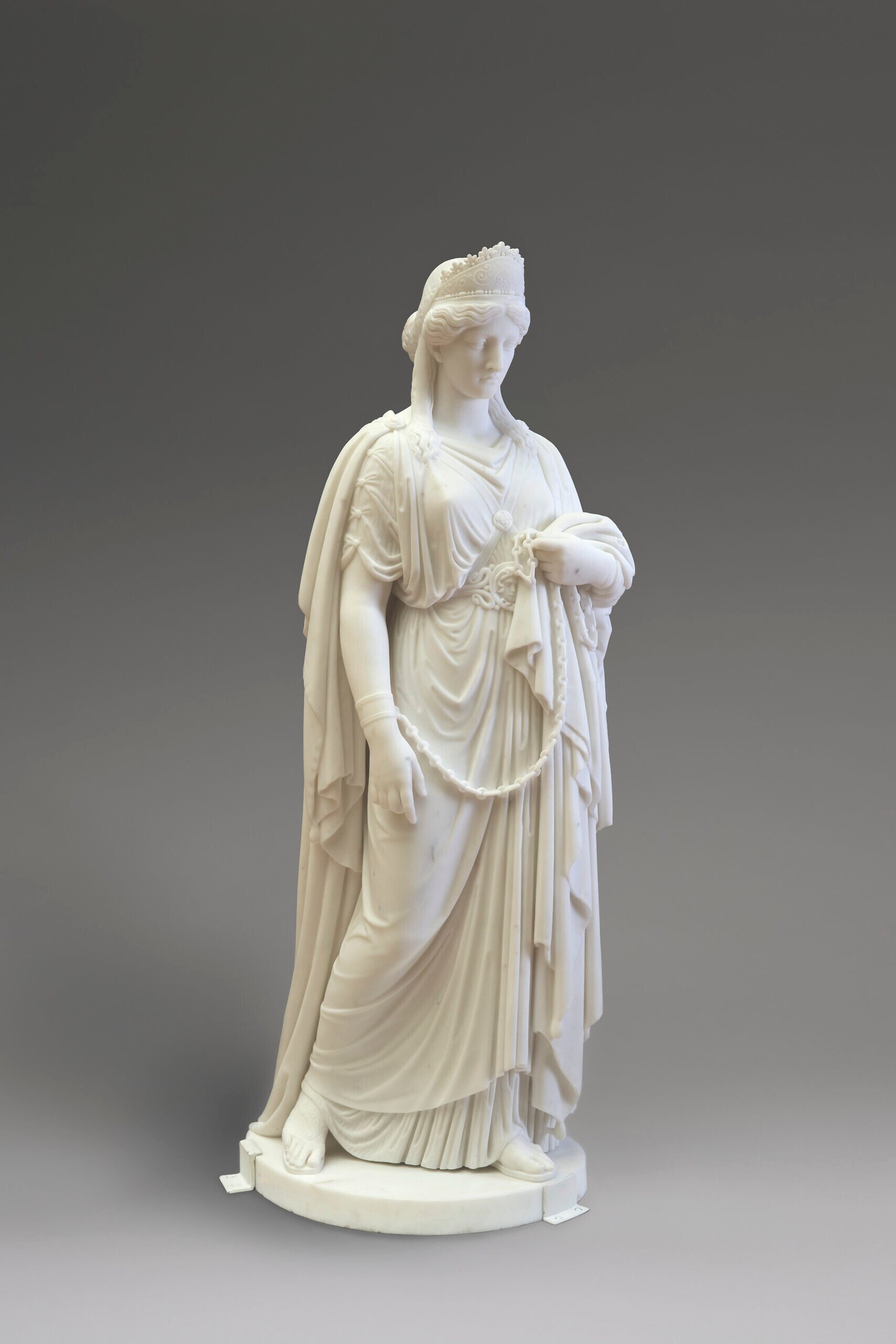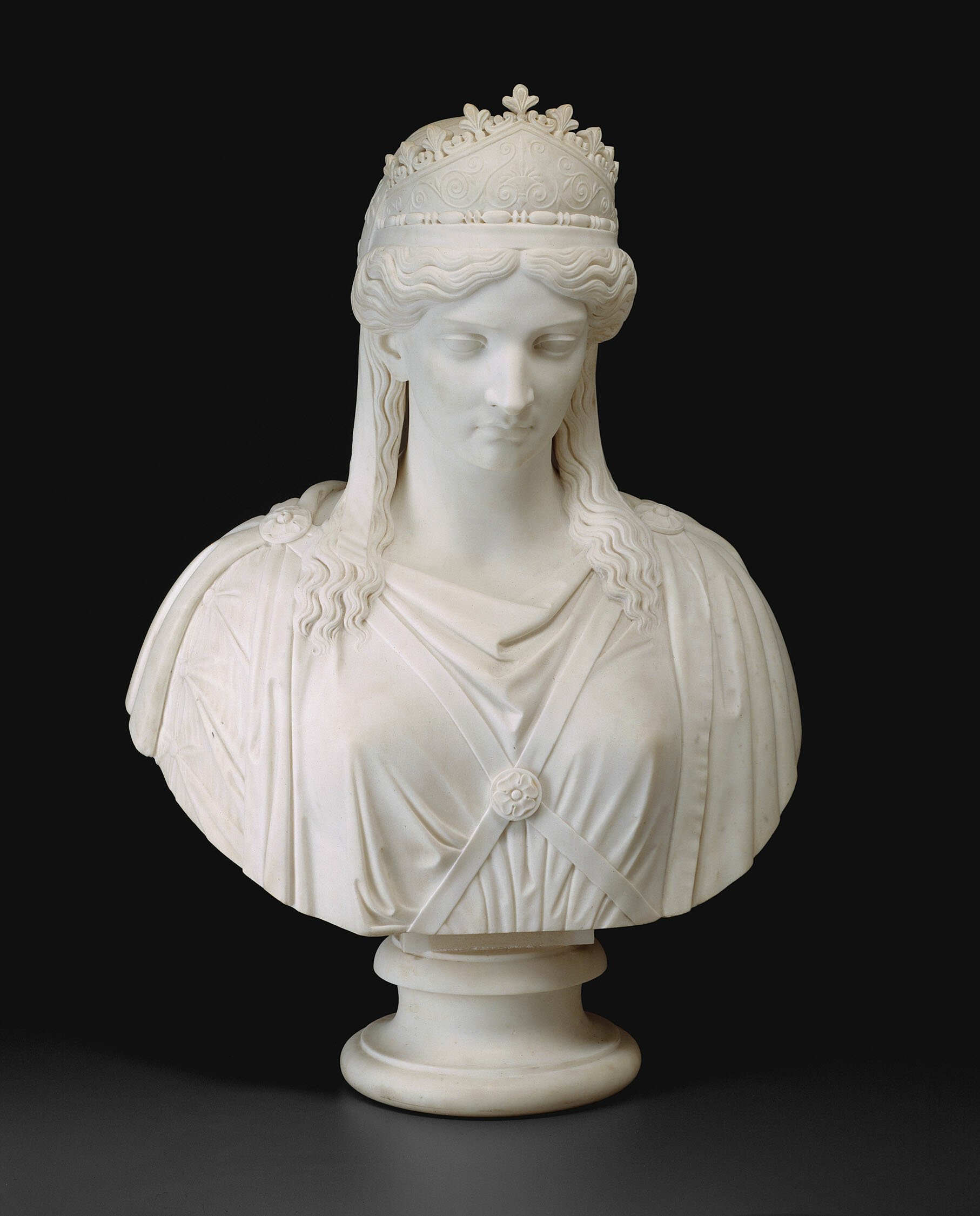(JNS) — The third-century Palmyra queen Zenobia, who ruled in present-day Syria from about 267 or 268 to 272, stands on a dais among her soldiers in Giovanni Battista Tiepolo’s c. 1725-1730 painting in the collection of Washington’s National Gallery of Art.
Regally clad, she leans back on her right elbow, bearing a golden scepter. Her extended left hand creates a circle with her thumb and index finger that might suggest unity.
The monarch, who certainly has everyone’s attention in the painting, may have converted to Judaism secretly and projected ambiguity about her monotheistic penchant to secure support from a wide range of Romans, including soldiers, according to a new article published in the journal Klio: Beiträge zur alten Geschichte.
ADVERTISEMENT
The queen’s “turn towards monotheism reflected a growing trend in the East,” stated Haggai Olshanetsky, a University of Warsaw postdoctoral researcher in ancient history.
“Zenobia was neither the first, nor the last, ancient monarch to adopt such an approach, and in her case, it was a very pragmatic choice given the significant presence of Jews and God-fearers throughout the East, including within the ranks of the Roman armies of the East, and whom Zenobia wished to sway to her cause,” he said.
Olshanetsky holds four degrees, including a doctorate, from Bar-Ilan University and has published on Jews keeping kosher in the Roman army and watching the gladiatorial games and on Bar Kochba’s late arrival to the Second Century revolt.
ADVERTISEMENT
He noted in the new study, “Zenobia, the Great Jewish Queen? Re-analysing Zenobia’s Attitude to Monotheism, Judaism and Its Reasonings,” that scholars are skeptical of the early Christian sources that state Zenobia was born Jewish or converted to Judaism.
“The ancient sources implying Queen Zenobia converted to Judaism are possibly accurate,” Olshanetsky told JNS, noting that there was “extensive Jewish presence in the city of Palmyra, and in Syria at large, during Zenobia’s reign.” That suggests, he told JNS, that Palmyra was “the main Jewish center of the time.”
‘Lives depended on it’
The queen “is one of the most famous female leaders in history,” whose “story sparks the imagination, as she attempted to challenge the hegemony of the Roman Empire,” he wrote in the new article.
“This fascination with Zenobia tends to center on her political exploits and the expansion of her power, with relatively little attention paid to the personal qualities and beliefs, which may have facilitated her early successes or were employed by her in their attainment,” Olshanetsky wrote.
Zenobia has made news lately, despite 1,750 years having passed since her death. The new Syrian government reportedly is downplaying her significance in educational materials, some 10 years after ISIS destroyed buildings constructed under her rule. (Despite coins depicting her, NPR curiously referred to her earlier this month as “legendary.”)
Works depicting the queen, or thought to depict Zenobia, can be found in major museum collections, including a 17th-century etching at New York’s Metropolitan Museum of Art and a mid-19th-century marble bust at the Art Institute of Chicago. An idealized drawing of a woman by Michelangelo at Florence’s Uffizi—copies of which can be found at the Prado in Madrid and the British Royal Collection Trust—has been thought to represent the queen, as the 18th-century painter Sir Joshua Reynolds identified it.
Nathanael Andrade, chair and professor of history at the State University of New York at Binghamton, has written that Zenobia has been romanticized “as a warrior queen” but ought to be remembered “as a skilled political tactician,” who “became ruler without being dominated by the men of her court.”

“She made bold, smart decisions in the face of harrowing pressure and overwhelming odds. Though ultimately defeated, Zenobia had to play a high-stakes game of survival in a time of immense change and violence,” he wrote. “The lives of her and her son depended on it.”
The ancient work Historia Augusta states that Zenobia “took part in her husband’s campaigns against the Persians and often marched with her troops,” according to Andrade. “It never specifies that she fought in battles, but popular culture has made Zenobia into a warrior queen anyway.”
Writing in the Historia, Athanasius of Alexandria recorded, according to Olshanetsky’s translation, “When was ever such iniquity heard of? When was such an evil deed ever perpetrated, even in times of persecution? They were heathens, who persecuted formerly. But they did not bring their images into the churches. Zenobia, was a Jewess, and a supporter of Paul of Samosata, but she did not give up the churches to the Jews for synagogues.”
Olshanetsky noted in the article that merely “a few pages” are dedicated to Zenobia’s Jewishness in an “influx of books and articles” on the queen in the last two decades, “and none of the publications presented nor discussed all the available ancient texts.”
The Jerusalem Talmud, which refers to her, doesn’t suggest she is Jewish. A biography of the queen in Encyclopedia Judaica notes that beyond Athanasius (293-373), the Syrian bishop Theodoretus (393-c. 458/466) and the Constantinople patriarch Photius (820-c. 891) also recorded that Zenobia was Jewish, though scholars “give little credence to it.”
“Her patronizing of Paul of Samosata, a Christian-Jewish thinker, has erroneously been given religious significance. However, recently discovered inscriptions, containing dedications such as levarech shemah le-alma alma (‘to the One whose name is blessed forever,’) as well as expressions from the Psalms, do testify to the penetration of Jewish ideas into the syncretistic religion of the Palmyrene population,” per Encyclopedia Judaica, which adds that “Zenobia herself rebuilt a synagogue in Egypt.”
Olshanetsky’s article recorded other sources, including Philastrius of Brescia, who wrote in 384 that Paul of Samosata, the Antioch bishop who was declared a heretic yet refused to vacate his post, “also taught Zenobia, at that time a queen in the East, to become a Jew.”
John Chrysostom (347-407), the Constantinople archbishop, blamed the maybe-Jewish queen for Paul’s heresy, the latter having “to gratify a certain woman (Zenobia), sold his own salvation.” (Olshanetsky noted that the timeline of when Zenobia became queen doesn’t fit John Chrysostom’s claim.)

“Despite the abundance of discussions on Queen Zenobia’s Jewish identity in Christian discourse, it is notable that a vital Jewish source does not infer or mention her Jewish identity: the Talmud,” he wrote in the article.
Rabbinic sources may have been mum about the queen, according to Olshanetsky, because they saw her as a threat to their way of thinking, as he sees it.
“The Palmyrene Jews were a proselytizing community who opposed the Palestinian rabbis, who in turn despised anything Palmyrene and opposed Zenobia, leading her to arrest some of them,” Olshanetsky told JNS. “Queen Zenobia maneuvered between monotheistic groups to garner support, possibly hoping to unite the empire under a monotheistic religion, which was not Christianity.”
“This can help explain the later Christian legends and hostility toward her,” he said.
In the article, Olshanetsky wrote that the rabbinic authors of the Talmud held little influence outside of the Holy Land and modern-day Iraq, “although their authority and status are debatable even in these two centers.”
“The rabbis and their followers suffered heavy losses during the Second Jewish Revolt in the second century C.E., and thus were fundamentally opposed to any attempts of rebellion against the Roman Empire,” he wrote. “Since Queen Zenobia’s actions were essentially a revolt against the empire, there was no incentive for the rabbis to recognize or support her.”

To Olshanetsky, the rabbis also came out of a “profoundly patriarchal society and fiercely opposed the idea that pagans could convert to Judaism,” so they would, to him, have seen the queen who was a woman and a convert “as an aberration, thus deeming her unsuited to lead the Jewish people.”
He also noted that a rabbi in the Talmud, who was a contemporary of Zenobia’s, barred conversions of people from Palmyra, assuming one defines the Talmudic Tarmod as Tadmor, Palmyra. Elsewhere, the Talmud states that there will be a Jewish holiday on the day that Tarmod is destroyed.
“Such apprehension towards Palmyra, its Jewish community and Zenobia persisted to such an extent that hatred towards the city endured in rabbinic debate for centuries thereafter,” Olshanetsky wrote.
To Olshanetsky, the Christian sources that discussed Zenobia as a Jew are “largely crude compilations of two distinct ancient narratives.”
“One of these likely stems from a contemporary account, which independently described Zenobia’s conversion to Judaism, unrelated to later Christian figures or theological polemics inserted into the stories,” he stated.
“When we look at Zenobia’s world and the Judaism of the time through a modern Jewish Orthodox lens, and project this type of Judaism on ancient Judaism, we grossly misjudge and misportray the ancient Jews,” he said. “In Zenobia’s lifetime, the rabbinic circles were disjointed and fragmented, and their influence and reach were very limited. They did not represent the Jews as a whole and were a small marginal group.”
Instead of referring to them as “Hellenistic Jews,” Olshanetsky thinks that the diversity of Jewry at the time is more aptly referred to as “conventional Judaism.”
“This is the first time we’ve been able to fully grasp the extent, significance and distinct nature of this community,” he stated, of Palmyra.
| RELATED: 10 best places to experience Jerusalem’s ancient history

















